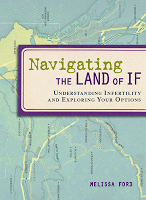Questions for a High-Risk OB
Questions for a High-Risk OB (Maternal Fetal Medicine or MFM/high-risk OB)
By Tina
A pregnancy is classified as “high-risk” when a mother and/or baby are deemed in danger during any part of the pregnancy. For a baby, this means either being born prematurely and all the problems/risks involved with it, or defects/conditions found by prenatal testing that may or may not endanger the child’s life. For a mother, this means serious health issues that can threaten her life/her baby’s life or are known miscarriage risks, such as high blood pressure, blood clotting disorders, thyroid disorders, diabetes, etc.
Most women end up meeting with a high-risk OB once they are already pregnant and issues develop with the pregnancy. For women who are found to have conditions that cause recurrent miscarriage, they are usually sent to meet with a high-risk OB prior to pregnancy for a pre-conception consultation.
My list of tips and questions stem from my personal experiences in dealing with a homozygous MTHFR gene mutation (and high homocysteine levels) and elevated anti-thyroid antibodies (specifically, Anti-Thyroglobulin Antibodies [Tg-Ab]).
I ask that as other women read this list of questions, you e-mail the Town Criers to add any questions you think need to be added (and you be credited for your additions) – I can’t possibly think of all questions to ask, especially because I have not yet reached the hurdle of getting pregnant yet.
For your pre-conception consultation/first appointment:
Keep a running list of questions prior to your appointment (especially if this is a pre-conception consult, since you will most likely have a wait before the appointment). As your appointment date comes closer, re-read your questions and prioritize them so they are organized for the doctor. If you are sent to a high-risk OB on an emergency basis, try your best to remain calm and organize your questions as best you can. Have your partner help you with your list.
Bring/have faxed over any relevant medical records: Surgeries, results of any tests run, list of medications, etc. You cannot guarantee your referring ob/gyn’s office (or other specialists involved) sent over everything the doctor will need.
If the clinic/doctor does not send you the medical history/insurance paperwork ahead of the appointment, request that it be sent to you. You will have more time to complete it and bring it with you – and your doctor will have more accurate information to review.
If the clinic/doctor you are seeing has a web page, try to find it prior to the appointment so you have some working knowledge of the office. It will save you time in the appointment from simpler questions on office hours, etc. for the more important issues that need to be discussed.
If possible, have your partner accompany you to the appointment. Since family history will most likely be taken during the appointment (even if you fill out forms prior to the appointment), it is good for the doctor to assess both sides.
If you specifically are going in for a pre-conception consultation, find out about how much time is allowed for the appointment. You do not want to be rushed through your questions.
Always take notes during the appointment – and write down/highlight anything that is unclear so you can ask the question again.
Questions about the facility (specifically if this was not on the web or given to you by your referring ob/gyn):
- How long has this office/clinic been open?
- What are the office hours?
- What is the location of the office? If the office/clinic is located in a hospital, ask about parking and parking validation.
About clinic/office communication:
- Is there a case manager that handles each patient?
- Who is available for call-in questions?
- How can I leave a message directly for the doctor for questions?
- Is there a number for off-hours problems and emergencies? What is the protocol for emergencies?
About the MFM doctor specifically:
- Where did the doctor(s) earn his/her degree(s)? What is his/her training in high-risk OB?
What hospital(s) are he/she/ affiliated with? - How well does he/she/ know the referring ob/gyn?
- Will the doctor met at the consult appointment be the primary doctor for all appointments? If not, how many other doctors are part of the group? What are their rotations?
- Will all treatment and procedures be performed by the doctors or technicians?
How often will I get to meet with the doctor face to face? - How open is the doctor to discussing information learned about from other sources?
- Is genetic counseling recommended? (if this has not already been done)
- What books are recommend for reading?
- What is the doctor’s view on alternative treatments (acupuncture, vitamins, etc.)?
- Will the MFM doctor be present during delivery with the referring ob/gyn?
About treatment and procedures:
- What additional tests need to be performed to evaluate me/us?
- Will my treatment be individualized or will set protocols be followed?
- What procedures are performed at the clinic/office? Which in a hospital or ambulatory center?
- Are there set office hours for specific procedures (ie: Blood tests, ultrasounds)
About success rates:
- May I contact any of your patients who have had similar risks/treatments?
- What are your statistics for couples with our diagnosis?
- How do your statistics stack up against national averages for live births?
- What would account for these differences?
About specific tests:
- Will the doctor run a color doplar ultrasound to rule out a condition called Vasa Previa(women who conceived via IVF have a higher risk of this condition)?–added by Linda.
Personal tips and things to keep in mind:
If you know you have a condition prior to pregnancy that will ultimately make you high-risk and your ob/gyn does not suggest seeing a MFM clinic prior to pregnancy: Insist on it. The more eyes watching over the high-risk pregnancy, the better – even before the pregnancy occurs.
Your ob/gyn and MFM doctor may not always agree on care when you see them individually. If you hear one thing from your ob/gyn and something else from the MFM doctor later, ask that they confer on your case so 1) you get a straight answer and 2) you get the right answer.
You will be seeing your health practitioner more often – possibly every two weeks instead of every four weeks from the start because you will alternate between your regular ob/gyn and your MFM doctor. Nearing the end of your pregnancy or if some other issue(s) comes up, your doctors will want to see you more often – possibly once a week. If you are working or need to arrange for childcare, you should keep those visits in mind.
Ask if you can set up appointments in advance so you can coordinate them with your ob/gyn and other specialist visits.
Make sure you continue to see any specialists that you need to treat pre-existing medical condition(s). These specialists can work closely with your doctors to help supervise your pregnancy.
Ask for all copies of reports on tests run, bloodwork, etc. so you have it with you when you need it, including when you go in for delivery. Remember: No question is to small or too “stupid” when it comes to high-risk ob. Don’t be embarrassed by any questions you may have. As with a non-high-risk pregnancy, it is vital you quit smoking, drinking alcohol or taking illegal drugs, or anything else that would be detrimental to the baby.
July 26, 2006 1 Comment
Gestational Surrogacy
Gestational Surrogacy
by Tara
Why would you be using surrogacy?
Infertile couples generally move to surrogacy after being given a definitively negative diagnosis about their ability to conceive. While there are many, many factors that contribute to the decision of using a surrogate, some broad examples of diagnoses that lead to surrogacy are endometriosis, hysterectomy, and poor egg quality. A couple may also choose surrogacy if they are told they cannot safely carry a baby to term.
There are two types of surrogacy: Traditional Surrogacy (TS) and Gestational Surrogacy (GS).
With TS, the carrier’s eggs are used and the child is biologically related to her. With GS, the Intended Mother’s (IM) or a donor’s egg is used and the child is either biologically related to the IM or to the donor. With both TS and GS, either the Intended Father’s (IF) or donor sperm can be used.
What to Expect
1. Time. The surrogacy timeline is not usually very short. Expect at least 4 months to pass between the time you decide on surrogacy until you are waiting for the call from the Dr. with your pregnancy test results.
2. Finding a carrier. Whether you are using a TS or a GS, finding the best carrier for your family is the most important part of the process. In an ideal world, we’d all have a friend or family member willing to give us the special gift of carrying our child. But since that isn’t possible for everyone, it’s important to do your research and find a good agency or surrogacy service that will match you with the perfect partner. Sometimes partners match independently without the use of a service and many of these matches are made online. I have read some beautiful stories as a result of Internet matches, but of course, as with anything on the Internet, anyone seeking a match this way should proceed with caution.
3. Legal issues. The laws regarding surrogacy are different in each state. Finding a good surrogacy lawyer is imperative as is having a contract drawn up between the carrier and the intended parents. This process can take quite some time, so starting early is important.
4. Money. Surrogacy is not an inexpensive option. The major fees are legal, compensation for the surrogate, and medical fees. The range is wide—but no matter your situation, you shouldn’t expect to pay any less than $10,000, and many people will pay up to $50,000 or even $100,000 depending on the situation.
5. Insurance. In most cases, the carrier’s insurance will cover the pregnancy. Your lawyer should advise you to carefully read her policy to make sure there are no significant exclusions. If the carrier doesn’t have insurance, you may be required to purchase insurance for her (or you may want to find a carrier that does have insurance).
Problems That May Arise and Ways to Troubleshoot
It would be impossible to consider ALL of the legal issues that might possibly arise as the result of a surrogate pregnancy. Therefore it is so important that you find legal representation from someone who has extensive experience with surrogacy. You’ll be surprised at the number of things you have to work out before you can even start the meds or go to transfer! It’s also important to make sure you and your carrier are on the same page concerning some major issues such as compensation, number of embryos to transfer, number of cycles to try, pre-natal testing, and difficult decisions such as selective reduction/abortion. Figure the tough stuff out before any money changes hands.
Personal Tips
Don’t do surrogacy until you’re emotionally ready to do it. If you think you’ll be too angry that someone else can carry and you can’t, you might not be ready. On the other hand, it might be healing to you. You will know when/if you’re ready.
Have the carrier’s major testing done before paying a lawyer to draw up your contract. (You will likely have to pay a retainer fee, though, to get you started with some things). Be completely honest with your carrier from the very start. Keep as open a relationship as possible. And do the same with your partner!
It’s easy to feel separated from the pregnancy since you aren’t cycling or carrying. Keeping a blog or a journal during the process might help you feel more connected.
Some online resources:
http://www.allaboutsurrogacy.com/
July 26, 2006 2 Comments
How To Tell Children About Third Party Reproduction
How to Tell Children About Third Party Reproduction
by Eric
Before any decision can be made as to how to tell a child or individual that they were conceived via donor conception, the parent must first decide that they themselves are ready to tell. I say this not to provide the parent ammunition to procrastinate but more so to ensure that they are committed to telling. One of the few things I have learned about parenting is that kids can read the mood you are in and if you are not committed to telling they may assign a negative connotation to the news your are giving them that may very well color their perception forever of their conception story.
When I was asked to write this post I knew I was asked to do so based on my commitment to this issue and my knowledge of the resources out there on this topic. Because I am only a parent and not an expert on these matters I encourage you to seek out the sites and books I recommend as resources as no one book, pamphlet, or website site is tailored to meet your individual needs and you must yourself decide what and how you can begin to tell the child their story.
The one general proposition that all the experts have come to agree on is that the earlier the individual learns their story the better. In my own case, we began telling our son at age two and we remind him of his story at various points throughout the year and at various life events where it is appropriate to do so. Our daughter is about 2 ¼ years younger than her brother and started hearing the story almost from her birth as it was already a normal part of our routine to refer to the donor when our son questioned how his new baby sister had come into the world. I must be honest–even as they each approach ages 5 and 3, they do not fully understand the donor’s role but they do know a common donor was integrally involved with their creation / conception and their half sibling is here due to the same donor.
No child understands what the “birds and the bees” story fully represents at these young ages but we tell this story to lay the groundwork. Obviously for older children, young adults or older individuals this approach is inappropriate and for those scenarios I am not equipped to provide useful advice other than complete and utter honesty and the decision to not hold anything back.
Resources
The UK Donor Conception Network has produced what I believe to be the most comprehensive program titled “Telling & Talking” which is comprised of 4 pamphlets and a DVD film to assist parents in their decision to tell and how to tell. The pamphlets are designed for 4 distinct age ranges 0-7 years old, 8-11, 12-16, and 17 years and older. Each pamphlet is free and can be downloaded as a PDF file right from the DCN website. The companion DVD offers a 45 minute film of 10 families sharing their experiences of “telling.”
http://www.donor-conception-network.org/tellandtalk.html
A website put up by the Harvard Medical School for Mental Health and Media
titled “Talking to Children About Assisted Reproductive Technology” offers a mix of commentary and instant audio clips from varying families offering their experiences. The site, beyond offering general advice, focuses on two distinct age groups–kids and teens.
http://www.artparenting.org/index.html
Donor Sibling Registry
Books for Reading with Children:
- Before You Were Born… Book Series from XY and Me Books (Janice Grimes) http://www.xyandme.com
- My Story / Our Story Series from the Infertility Research Trust http://www.dcnetwork.org/ (link through Online Bookshop)
- Tell Your Child Series – Rozanne Nathalie and
http://www.beaverspondpress.com - Let Me Explain: A Story About Donor Insemination by Jane T. Schnitter and Joanne Bowring. Perspectives Press, 1995.
- Mommy Did I Grow in Your Tummy? Where Some Babies Come From by Elaine Gordon. E. M. Greenberg Press, 1992.
July 26, 2006 1 Comment
Prenatal Screening and Diagnostic Tests
Prenatal Screening and Diagnostic Tests
by Jessica
[While pregnancy screening may not seem tied to infertility, we felt that women who have experienced infertility or a prior pregnancy loss uniquely approach these tests with difficult decisions to make. Not everyone chooses to take these screening or diagnostic tests. And not everyone who takes these tests receives the results they want to hear. Some women who have worked hard to become pregnant may not want to take any unnecessary risks and choose not to test. Other women may know that they are at risk for a chromosomal disorder and may want to know whether or not the fetus has that chromosomal disorder. Regardless, diagnostic testing can be a very emotional experience. Make sure you have a good support system in place as you decide whether or not to embark on testing that will remain with you no matter what decision you make based on the information gained from these tests.]
Test or Not to Test?
Once pregnant, you are faced with an entirely new set of decisions. One of those is whether to do prenatal screening and/or diagnostic tests such as the Ultrascreen, AFP screen, CVS (Chorionic Villus Sampling) or Amniocentesis.
These tests normally tell you that your baby is just fine – that you don’t have to worry about Down Syndrome (Trisomy 21) , Trisomy 18 (Edwards Syndrome), neural tube defects , or other serious conditions that these tests can screen for or diagnose. On the other hand, these tests may tell you that your baby does have one of these conditions, giving you the opportunity to decide whether to terminate the pregnancy or, if the condition is compatible with life, the opportunity to prepare for a special needs baby.
Maybe it took a long time to get pregnant, or you’ve experienced pregnancy losses in the past. These experiences could influence your decisions on prenatal testing.
Screening tests (Ultrascreen or nuchal translucency test and AFP) don’t pose any kind of risk, but they only give you odds of whether or not there is a problem. They can’t give you a yes or no answer. And many women lament so-called “false positives” – when the tests tell you that your baby’s odds of having a particular condition are higher than they would normally be for a woman of your age. Hearing that your baby may be sick, but not knowing for sure can be scary.
In fact, the idea of hearing news like this which is not definitive is why some women skip the screening tests and go straight to the diagnostic tests. Diagnostic tests (CVS and amniocentesis) are invasive and do pose a risk of complications and even pregnancy loss. The odds of complications are usually said to be 1 in 200 or 1 in 300. But while these tests do carry a risk, they have an advantage over the screening tests — they provide a definitive yes or no answer. If the amnio says the baby is OK, that means you can be absolutely sure the baby is free of certain conditions. Both screening and diagnostic prenatal tests, performed in the first and second trimester, look for abnormalities of the fetus. Some of these abnormalities include neural tube defects, the most well-known of which is Spina Bifida; others are chromosomal problems such as Trisomies (Trisomy 21, Down Syndrome and Trisomy 18, Edwards Syndrome are the most common of these); or some other defect. Some defects will inhibit the baby’s quality of life and some of these conditions are incompatible with life.
What to Expect
Ultrascreen and AFP are screening tests. The Ultrascreen relies on a blood draw and ultrasound. The AFP also relies on a blood draw, which is sometimes supplemented with a Level II ultrasound. The Ultrascreen is performed at the end of the first trimester. The ultrasound measures the nuchal translucency, the fluid under the skin at the back of the fetus’s neck. The blood test measures the levels of two substances in the mother’s blood – free Beta-HCG and PAPP-A. By looking at these values together, doctors can determine the risk of certain disorders. According to Genecare, the Ultrascreen detects 91 percent of Down Syndrome and 97 percent of Trisomy 18. In addition, Genecare says Ultrascreen reduces so-called “false positives” to 2.5 percent.
The AFP (Maternal Serum Alpha Fetoprotein test, also known as the quad screen because it measures four substances in the mother’s blood) is performed during the second trimester, between 15 and 20 weeks. It is less accurate than the Ultrascreen (with the exception of neural tube defects). The AFP test is 80 percent accurate for neural tube defects, 60 percent to 80 percent accurate for Down Syndrome and 60 percent to 80 percent accurate for Trisomy 18. When women complain about “false positives” it is usually from the results of the AFP.
These screening tests pose no risk to the developing fetus, but they are also not definitive. They give the patient “odds” of whether their baby is healthy or not. For example, the screening tests will tell you that there may be a 1 in 400 risk of having a baby with Down. But they can’t tell you for sure. Still, because there is no risk, they are a popular first step for many patients.
Diagnoistic tests include CVS and amniocentesis. The diagnostic tests are invasive and can pose a risk of complications. These diagnostic tests are generally recommended for women 35 and older because that is when the odds of having a fetus with one of these conditions cross over with the risk of complications from the tests.
CVS is performed at the end of the first trimester and is considered a little more invasive and more likely to cause complications than amniocentesis, which can be performed starting at 16 weeks. However, there are a handful of practitioners across the United States who are considered to have similar complication rates for CVS as for amnio – i.e. 1 in 200 or 1 in 300. If you are considering a CVS, it is worth seeking out one of these physicians.
During a CVS, an ultrasound technician performs an abdominal ultrasound to show the doctor the location of the fetus and placenta. Depending upon the location of the placenta (which is what the doctor wants to access), the doctor will insert the needle either into the woman’s abdomen or through the cervix to reach the placenta. A local anesthetic is used to numb the area. Then the doctor inserts the needle. Once the placenta is reached, the doctor performs a pumping action with a device attached to the needle to “sample” a bit of the tissue. It takes a minute or so once in place. The doctor will show you a vial of the pinkish fluid that should be labeled with your name. Then they will clean you up and you are done. You are on bed rest for the rest of the day.
An amniocentesis uses similar techniques – local anesthesia, ultrasound, a needle through the abdomen (never the cervix for this one). With this test the doctor retrieves a sample of amniotic fluid. Again, the doctor should show you a vial of the liquid labeled with your name. And again, you are on bed rest for the rest of the day.
Whether to pursue any of these tests or screenings is an individual decision. Keep in mind that odds are only odds. If odds are 1 in 400, somebody has to be that one, whether its odds for a genetic defect or odds of complications from one of the diagnostic procedures.
It takes a week to 10 days to receive the results back. For amnio and CVS some practices offer a preliminary result called FISH for an additional fee that comes back in about a day for those who are extra anxious about the results.
Personal Tips
If you are considering a CVS instead of an amnio, it’s a good idea to schedule it as
soon as you see the baby’s heartbeat on the six week ultrasound. The top-notch CVS doctors’ schedules fill up quickly.
Keep in mind that you can always cancel the appointment later – for example, if you get excellent Ultrascreen results, or even if you just change your mind. But it will be tough to book a last minute appointment with someone who is really good, and you want someone who is really good.
If it is important to you to know the results in at the end of the first trimester instead of the middle of the second trimester, the Ultrascreen and CVS are the way to go.
For my IVF pregnancy, my RE didn’t have a lot of information to give me about prenatal testing and by the time I got in to see my OB at 10 weeks or so, it was too late to schedule a CVS. So I opted for the amnio. I was afraid of false positives so I skipped the screening tests. The amnio came back positive for Trisomy 18 which is a condition incompatible with life. We ended up terminating the pregnancy. And let me tell you, there’s a big difference between terminating at 12 weeks and terminating at 18 weeks, and I’m just talking about emotionally.
For our FET pregnancy we did all the screening tests, the Ultrascreen and the AFP. And we did the CVS. I did a lot of research on who to go to for the CVS.
When searching out a doctor for CVS, call the perinatologist practices that perform the procedure and ask to speak to a genetic counselor. Tell the counselor about your infertility, how long and hard you fought for this pregnancy, etc. Then ask the counselor how many CVS procedures each doctor performs each year. The higher the number the better. (The doctors who did my IVF pregnancy amnio did 50 CVSs per year while the ones I eventually went to for my FET pregnancy CVS did 300 a year. With this information in hand, I chose to take the hour drive to the more experienced doctor rather than the 20 minute drive to the 50-per-year doc.) You can also ask the genetic counselor about the loss rates for the practice for amnio and for CVS. (They probably won’t tell you each doctor’s loss rates.) Finally, ask the counselor who she would go to (or who he would send his wife to see.)
Whatever prenatal testing path you decide to take – Ultrascreen, AFP, amnio or CVS – you may be scheduled for an appointment with a genetic counselor before your screening test or your diagnostic procedure. The counselor will ask questions about your family health history, any drugs you’ve used during the pregnancy, and similar questions. The genetic counselor will also likely tell you about your odds of various conditions and what those conditions are. And the counselor is the one who will call you with the results.
July 26, 2006 4 Comments
Medical Management of Miscarriage (non-surgical means)
Medical Management of Miscarriage
by Dr Spouse
Why You May Use Medications to Bring About Miscarriage (rather than waiting for a natural miscarriage or using surgical means)
If you’ve had an incomplete miscarriage or if a loss is imminent, a third option (after natural miscarriage or a D&C) is to use medications to enable the uterus to push out an remaining tissue. Medications given include RU 486 and misoprostol. Methergine may also be given.
What to Expect (My Experience)
In my 10th week of pregnancy, I noticed some spotting. I called my GP and he put me into the end-of-the-day emergency slot and booked me in for a scan later in the week. He tried to reassure me it was nothing to worry about. The next morning, I had more spotting but it was brown, so I didn’t worry. By the afternoon I’d had some red spots and was starting to panic so I took myself to A&E (emergency room).
They asked me how much blood I thought I had passed, and what it was like – I now know they were trying to work out whether I’d had a complete miscarriage. The A&E doctor told me my cervix was open, but then they took me up to the gynecological ward. The gynecologist told me the other doctor didn’t know what he was talking about–my cervix was closed and it could be a threatened miscarriage. We were booked for an earlier scan the following morning (Wednesday) and went home.
At the scan, we had the news that you can never forget. The sac was empty. They sent us upstairs to the ward to consider our options. They asked me when was the last time I ate and a female gynecologist came and discussed the options with us. She asked us if we’d like a little time to consider them, but it didn’t take us long. They were willing to let me go away for a week to try and miscarry naturally, or to offer us medical or surgical management.
The doctor explained the “evacuation” procedure and the medical procedure. I was also told that if I chose expectant management (natural miscarriage), they would probably ask me to have surgery if it didn’t work. As my cervix had been closed and the spotting hadn’t gotten any worse, I didn’t want to wait and possibly miscarry at work or hang around at home waiting for it to happen. I wanted some kind of connection to what was happening. So that was why we chose medical management. We were also told that, in the days before scans, women like me with a threatened, but incomplete, miscarriage would not have been able to have any confirmation of the embryo’s death and could have clots travelling round their bodies etc.
The bed I’d been put in at the hospital was reserved for me; if I’d needed to come back earlier it would have been there for me. At my current stage of pregnancy (10 weeks), I was given some tablets orally, told to go home for 48 hours, then given more as vaginal pessaries. I know that it changes depending on how far along you are, so other people’s treatment may be different.
The intervening 48 hours (between first dose and second dose – I believe they are different drugs but I’m not too sure) was pretty uneventful though my husband took the Thursday off to be with me at home, and take me in to hospital if necessary – it can happen pretty quickly at home before you go back. Friday morning, he took me in and went to work. My anaesthetist friend told me to take some paracetemol and codeine before going in and I’m very glad I did.
Within a few hours I had very bad cramping, slightly relieved by walking around. Around midday, I had passed the sac. I had a better idea then of what the nurses were trying to get me to look out for earlier in the week. Finally around 3pm the blood flow lessened and although my blood pressure was pretty low I started to feel a little better. Basically I had been through a very short labour.
My husband came to pick me up about 5 but they got me to stay in overnight, partly because it had only been a couple of hours since the bleeding had begun to ease off, and it had by no means stopped. I was asked to use horrible non-absorbent hospital pads, and to use a cardboard bedpan every time I went to the loo, so they could check what I had passed.
It took about a week for me to stop feeling sick and my breasts to go down. I gather that can be even longer if you have surgery. I have since had natural miscarriages as well, but at a much earlier stage.
Problems That May Arise and Ways to Troubleshoot
There are two reasons why I’m not sure I’d have this treatment again. One is that having had more miscarriages, I know they’d now offer analysis of the embryonic material if they could get any. I’m not sure they could do that if I had medical management.
The other is that I do feel that I’ve had a valuable experience, but you don’t need to have every valuable experience more than once. I’ve also now had surgery (a lap and dye) which I’d never had before the first miscarriage, and so I feel a bit more confident about having a general anaesthetic than I did before.
Personal Tips
I think the worst part was the pretty ineffective pain relief. The nurses seemed to need to keep checking with each other and the doctors and then forgetting they had checked. I am very glad I did choose that method of managing the miscarriage; the only part I’m not sure about is whether I’d do it again. I am glad I did have some sense of what was happening and that it was over.
July 26, 2006 12 Comments












